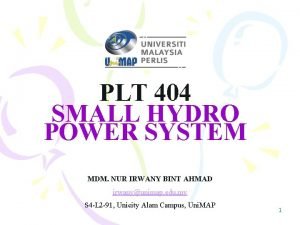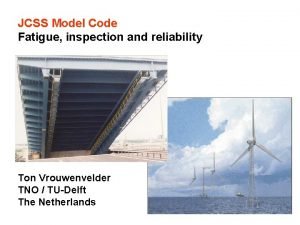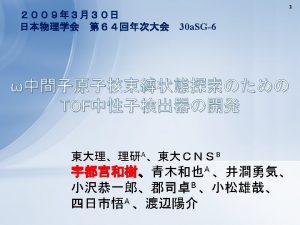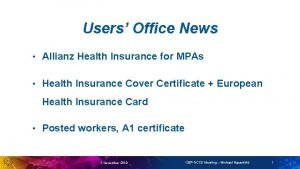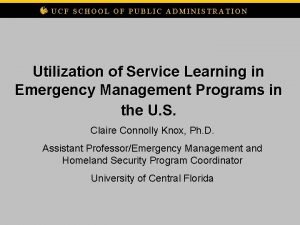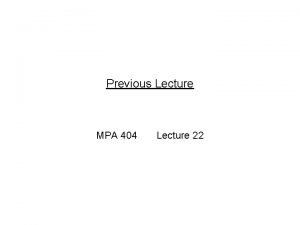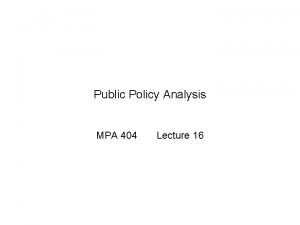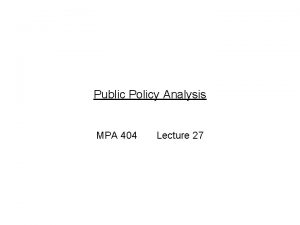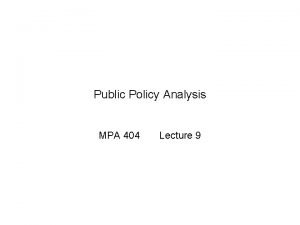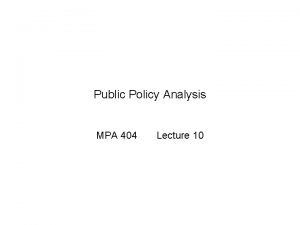Previous Lecture MPA 404 Lecture 22 Previous Lecture






- Slides: 6

Previous Lecture MPA 404 Lecture 22

Previous Lecture Ø The start of cost-benefit analysis Ø The basics and its history Ø The micro macro level distinction, use of IRR and PV discounts Ø Example of cost-benefit analysis

Risk Analysis Ø A risk analysis, in terms of public policy and project management, is simply the exercise of identifying explicitly those risks that may push the project towards failure, make it costly, or impede its efficiency. Ø There are several steps involved in this kind of an analysis. The general ones are as follows; a) Identify the Hazards: Make a complete survey of probable hazards. These involve an academic exercise and a physical aspect too. The academic exercise concerns the knowledge gained from research and past experience, while the physical aspect concerns the analyzer/designer of a policy being at eh place of proposed project implication by himself in order to assess the on ground situation. b) Who is in harm’s way? Means who is vulnerable to risk. It is mostly about indentifying groups. For example, in case of construction of dams and hydropower projects, there would be many people who would be facing displacement. This is what we know of. But do we know of other risks associated with this move? For example, what about risks of settling in

the new area (livelihood adjustment, culture, travel, social relationships, health hazards, etc). These sort of things need to be kept in mind before moving ahead with decision making. c) Evaluate the risks: The third step is the evaluation (both in monetary and non-monetary terms) of the risks that the analyzer sees. Analyze whether the risks are worth including in programs, and try to rank them from the highest to the lowest. d) Implementing the findings: Once analyzed, the findings should be presented and shared with the decision makers in order for their incorporation into the project hazards and risks. Sharing the findings increases the chances of better advice in this regard, and of identified becoming a focus in project implementation. e) Review assessment and updating: This step is more in line of new developments and new information availability that may alter the nature of risks. In that case, the profile of risks would need to be updated.

Ø Risk Assessment Example: Work safety in a factory Hazards Who might be harmed and how? What has already been done? Anything else needed to control risk? Action by who? By when? Follow up

Ø Back to tax imposition: the case of producer and consumer surplus in terms of tariffs and quota’s. The difference between tariff and a quota is that in tariff, there is no restriction on quantity imported but quota is applied specifically for restricting the imported units.
